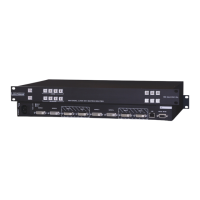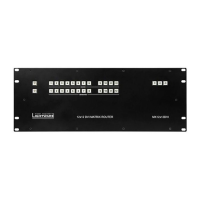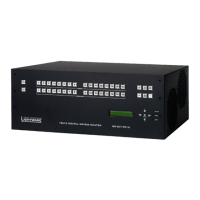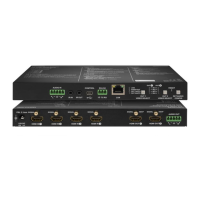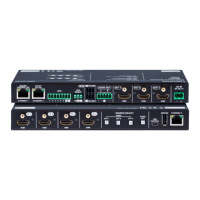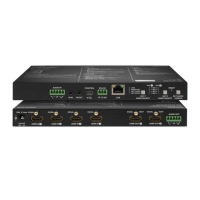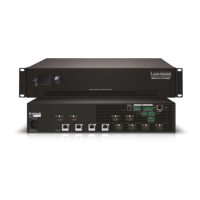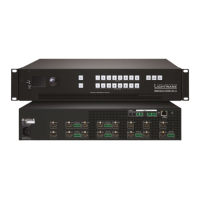Standalone MX DVI-Plus family
User’s Manual
Section 7. About EDID memory Page 51 / 89
7. About EDID memory
EDID router contains a 164 block non-volatile memory bank. EDID memory is structured
as follows:
1..50 ..................................................................................... Factory Preset EDID list
51..100 ...................................................................... User programmable memories
101..116 ( DVI_OUT_1...16)* ................................. Last attached monitor’s EDID list
133..148 ( DVI_IN_1...16)* ................................. Emulated EDID at input connectors
* Number of the inputs and outputs depends on the matrix size. (16, 12 or 9)
All EDID (including factory preset; user programmable memories; EDID at other inputs; and
EDID at outputs) can be switched and emulated at any of the inputs.
Most of the factory preset EDIDs include only one resolution. This is to force the connected
source to give a signal with the needed resolution. However there is a Universal EDID as
well which allows many resolutions. Universal EDID (address 49) allows multiple
resolutions including all common VESA defined resolutions. In addition, it also features
audio support. The use of universal EDID is recommended for fast and easy system setup.
Standalone MX DVI-Plus matrices can handle both 128 Byte EDID and 256 Byte extended
EDID structures.
Info: The first 50 EDID (1…50 inclusive) are factory preprogrammed and cannot be modified.
These are the most commonly used resolutions. The 30..45 memories and 49 (universal
EDID) contain EDIDs supporting various embedded audio formats, for HDMI audio.
Memory locations 117..132 and 148..164 are reserved for 32x32 matrix configurations only,
therefore not accessible in these matrix routers.
Info: The attached monitor’s EDID is stored automatically, until a new monitor is attached to that
particular output. In case of powering the unit off, the last attached monitor’s EDID remains
in non-volatile memory even is the monitor is unconnected.
Table 7-1. Factory preset EDID list
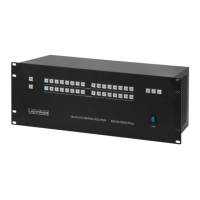
